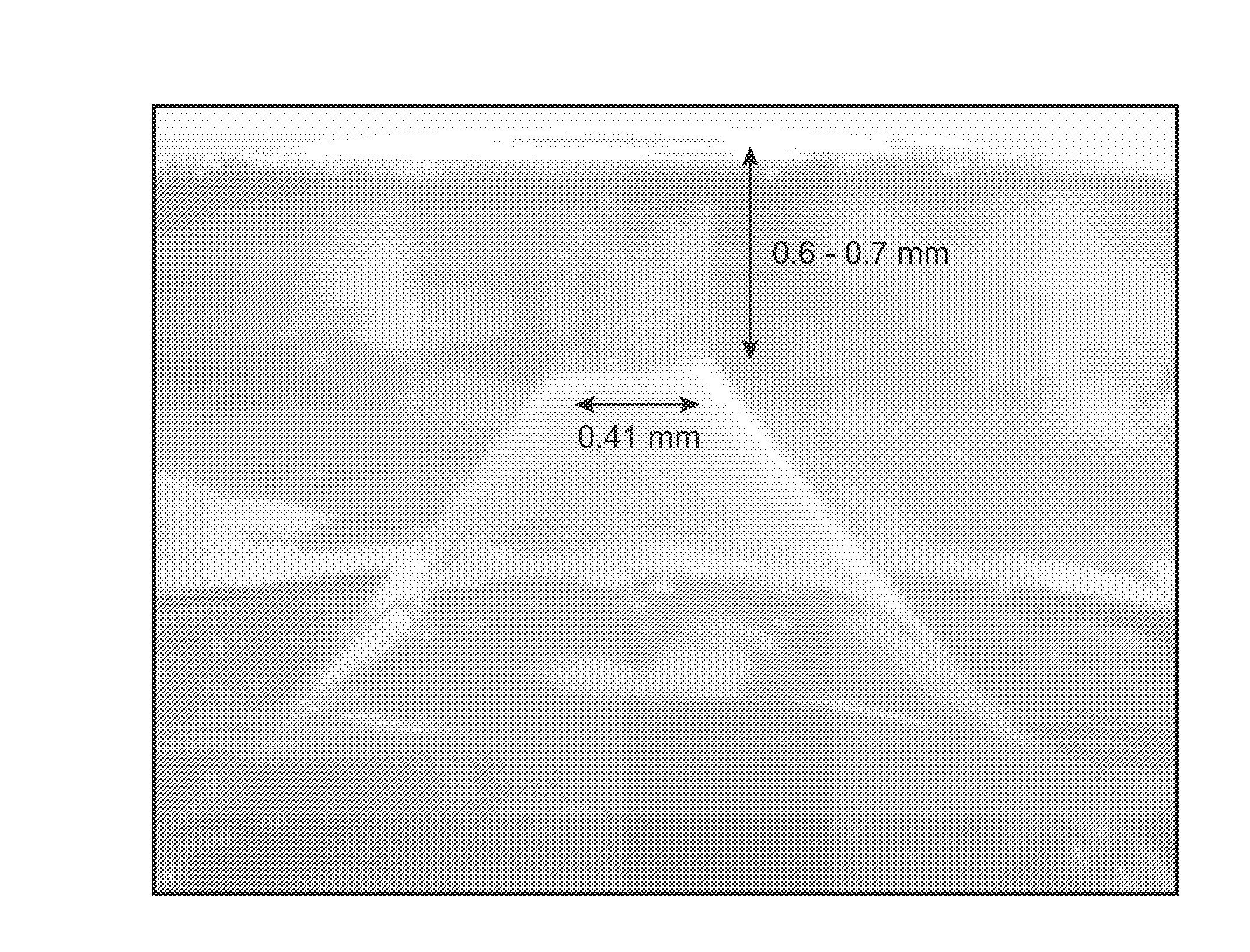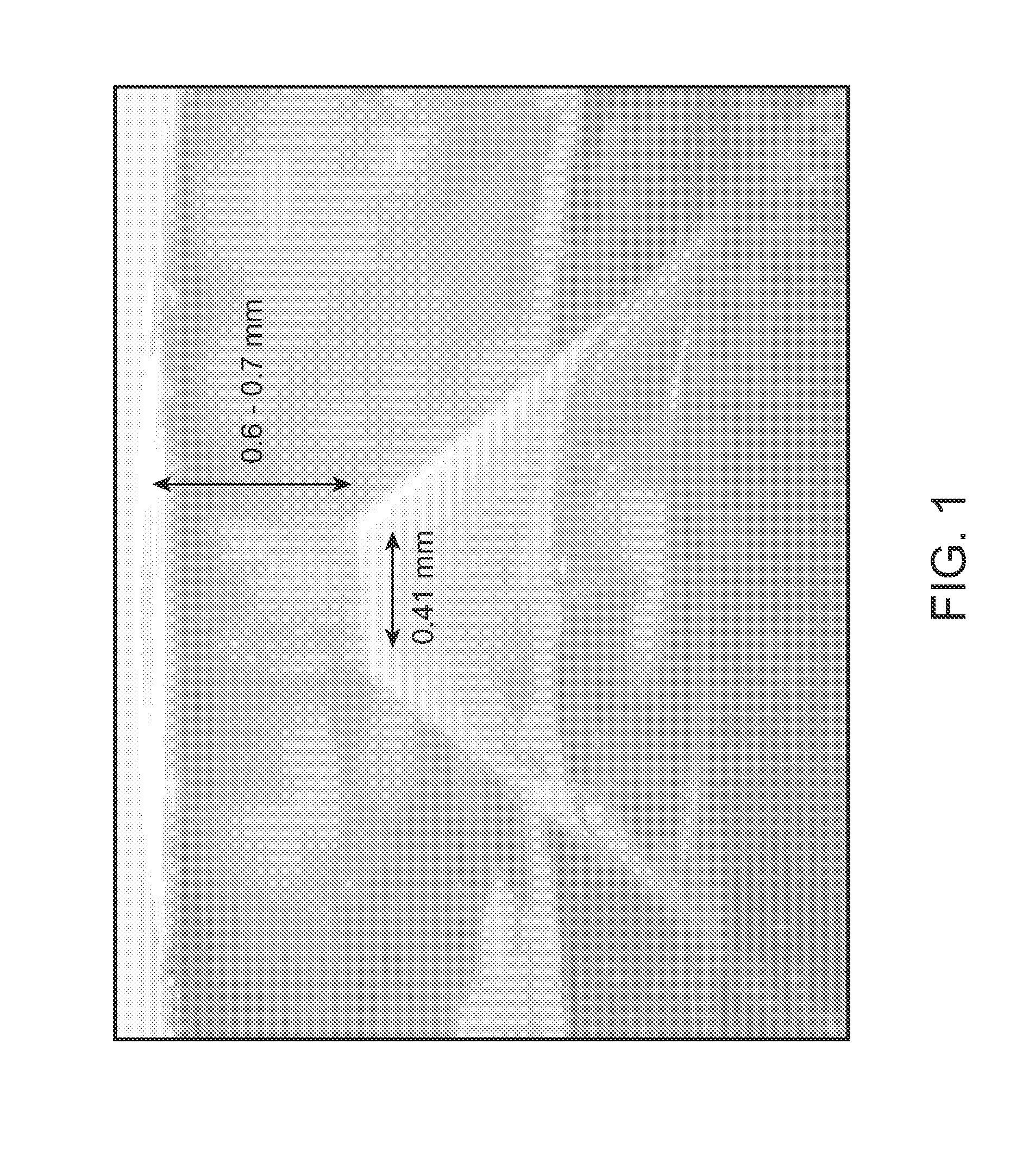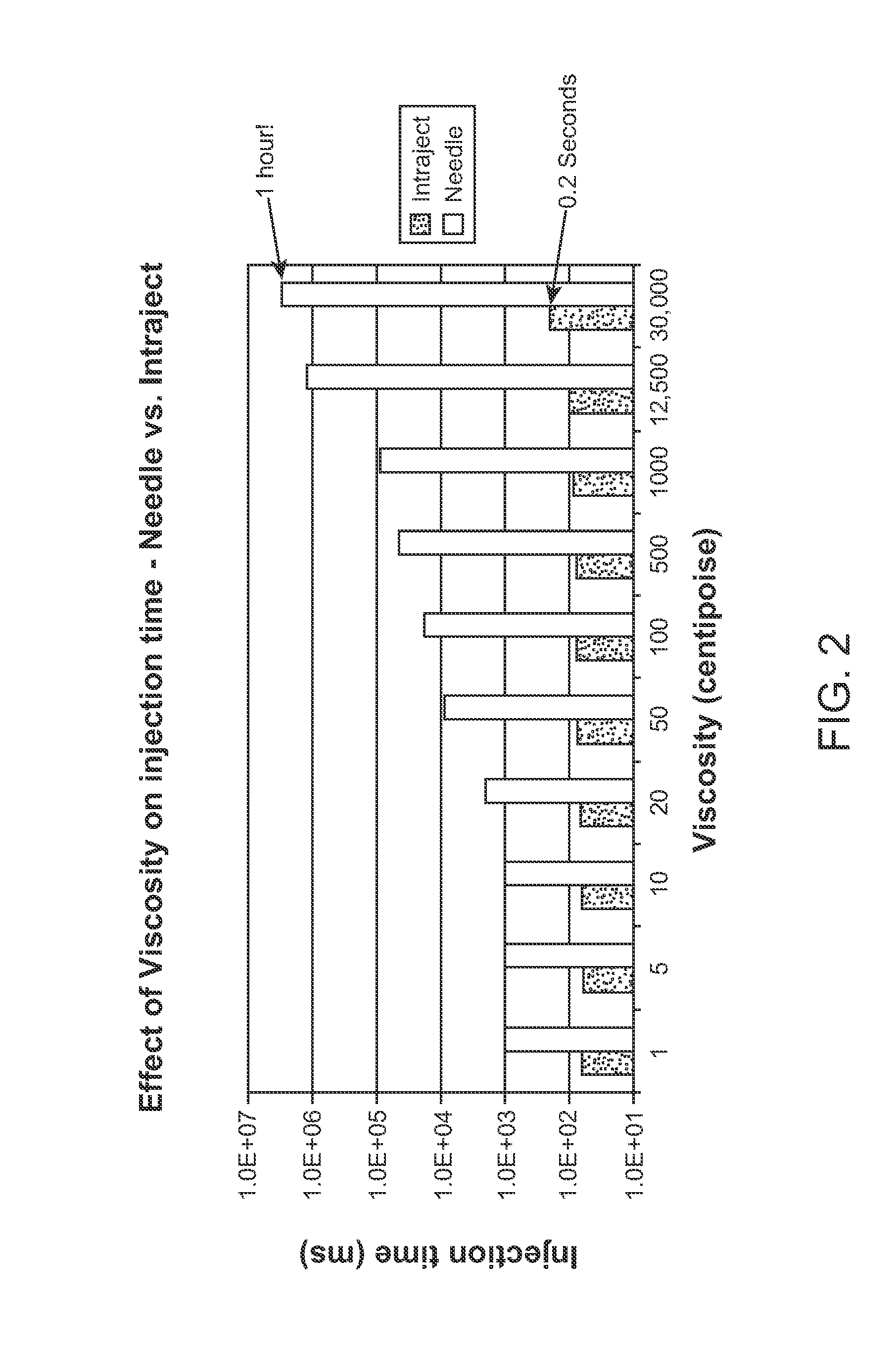Viscous formulations and their use in needle-free injection
a formulation and injection technology, applied in the field of viscous formulations and the delivery via needle-free injection, can solve the problems of increasing the market for injectable drugs, difficult to formulate many of these molecules into stable solutions, and the viscosity of enhanced formulations, and achieves long delivery times, significant hand strength, and extended stability
- Summary
- Abstract
- Description
- Claims
- Application Information
AI Technical Summary
Benefits of technology
Problems solved by technology
Method used
Image
Examples
example 1
Viscosity Versus Injection Time
[0138]Two trials were undertaken to determine the injection time of viscous fluids with both Intraject and a needle and syringe. The viscous fluids used in the trials were a range of different viscosity Dow Corning silicone oils. For the needle and syringe a range of the fluids were ejected by hand and the times recorded, for Intraject an instrumented force sensor was used to measure injection time for all available viscosities, however high-speed video was used for the thickest of the fluids because they did not flow properly off the force sensor and so did not give useable readings.
[0139]For the needle trial a 3 ml syringe and a 23G needle were used; the needle had an internal diameter of 0.38 mm and was the closest available needle size to that of the Intraject orifice (0.3 mm) The needle had a length of 31 mm and the syringe had an internal cross-sectional area of 58.5 mm2 Liquid formulation in an amount of 0.5 ml with viscosities of 50, 100, 500 a...
PUM
 Login to View More
Login to View More Abstract
Description
Claims
Application Information
 Login to View More
Login to View More - R&D
- Intellectual Property
- Life Sciences
- Materials
- Tech Scout
- Unparalleled Data Quality
- Higher Quality Content
- 60% Fewer Hallucinations
Browse by: Latest US Patents, China's latest patents, Technical Efficacy Thesaurus, Application Domain, Technology Topic, Popular Technical Reports.
© 2025 PatSnap. All rights reserved.Legal|Privacy policy|Modern Slavery Act Transparency Statement|Sitemap|About US| Contact US: help@patsnap.com



